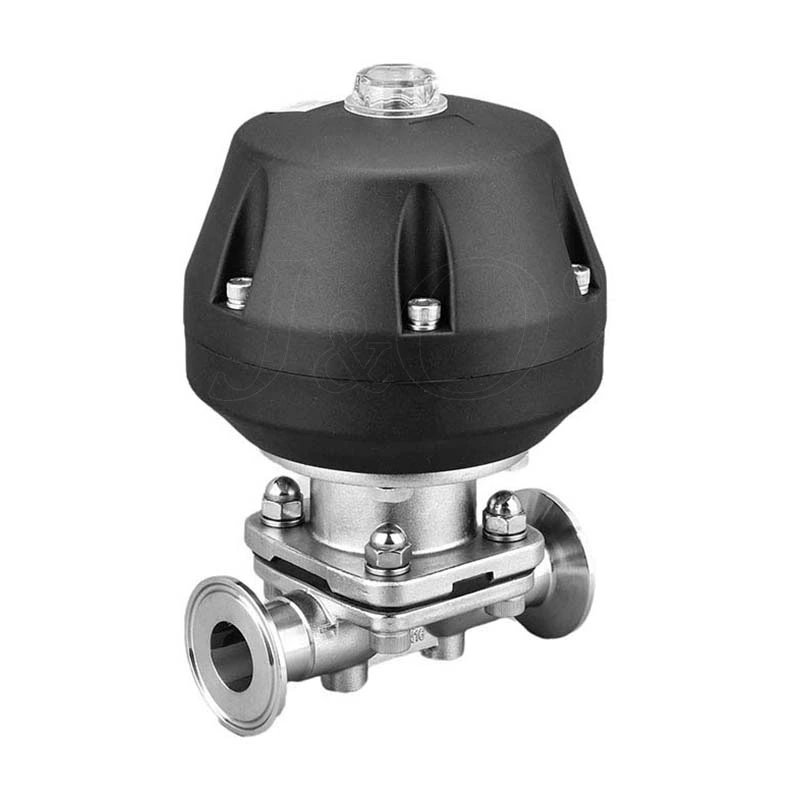Diaphragm Valve Is Suitable For Cutting Off And Connecting Media And For Diversion
The interior of Sanitary Diaphragm Valve is lined with rubber and fluorine, which has good corrosion resistance. The diaphragm valve is composed of valve body, valve cover, valve stem, diaphragm, cylinder, manual device and other driving parts. The diaphragm valve is divided into normally open and normally closed types. According to the needs of the site, the diaphragm valve can be installed with feedback signal devices, limit switches, electrical positioning devices, etc. to adapt to remote automatic control, centralized control, or control flow regulation.
The diaphragm valve is a special form of cut-off valve. Its opening and closing parts are a diaphragm made of soft material, which separates the inner cavity of the valve body from the inner cavity of the valve cover and the driving components, so it is called a diaphragm valve. Its outstanding feature is that the diaphragm separates the inner cavity of the lower valve body from the inner cavity of the upper valve cover, so that the valve stem, valve disc and other parts located above the diaphragm are not corroded by the medium, the packing sealing structure is omitted, and no medium leakage occurs. The driving mode can be divided into manual, pneumatic, electric, etc.
The diaphragm valve is suitable for cutting off and connecting the medium and for diversion, and sometimes it can also be used for throttling. The valve is suitable for corrosive and viscous fluids, such as mud, food, medicine, and fibrous adhesives; diaphragm valve applications: biopharmaceutical, food, industry; as well as industrial water treatment in power, chemical, electroplating, and other industries. Diaphragm valves are also used in the production of wafers; Note: Generally, it is not suitable for use in pipelines with temperatures above 60 degrees and for conveying organic solvents and strong oxidizing media, nor is it suitable for use in pipelines with higher pressures.
Diaphragm valve product features:
1. The diaphragm valve uses a composite diaphragm to separate the lower inner cavity of the valve body from the inner cavity of the valve cover, and forms a direct current channel with it, so that the valve stem, valve disc and other internal parts on the upper part of the diaphragm are completely isolated from the medium, eliminating the packing sealing structure, and the internal and external leakage of the medium can be avoided at the same time.
2. The diaphragm valve uses a diaphragm made of FEP (Teflon) fluoroplastics and synthetic rubber and a valve with a tetrafluoroplastic lining layer, which can be suitable for corrosive media except "molten alkali metals and elemental fluorine".
3. The diaphragm as the actuator is prone to fatigue fracture due to frequent opening and closing, and should be replaced regularly depending on the working conditions and the characteristics of the medium.
4. For the anti-corrosion performance and recommended operating temperature of the fluorine plastic of the fluorine-lined diaphragm valve, see the "Performance Table of Fluorine Plastic Lining for Valves and Pipeline Accessories".
